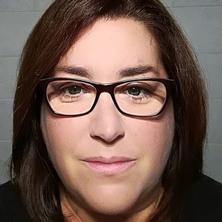Programme
Please note: Timings are in CET (Central European Time)
-
Registration
-
Welcome and introduction
- Session 1: Overviews
-
Keynote The EU Chemical Strategy for Sustainability (CSS) and the BPR
 Thomas Jakl
Head of Chemical Policy and Biocides, Federal Ministry of Sustainability and Tourism, Austria
Thomas Jakl
Head of Chemical Policy and Biocides, Federal Ministry of Sustainability and Tourism, Austria -
EU Commission overview
- Technical assistance to MSs 2022-2027
- Dissemination of finalised CA documents in CIRCABC
- Management of new data on an AS in an application for BP authorisation//Consequences for BPs of new information becoming available
- Renewal creosote, approval L(+) acid
- Article 19(4) and in situ biocidal products
- Classification of in situ active substances
- Post-authorisation conditions-physical, chemical and technical properties
- Approval in-can preservatives PT-6
- Renewal of antifouling active substances (PT-21)
- Mutual recognition procedures
-
General update from Echa with an emphasis on processes related to product authorisation
- General update Echa activities on active substances and guidance development
- Progress of applications for Union Authorisation
- Improvement of applications for Union Authorisation
- Process development for Union Authorisation
-
Industry perspective of the BPR
- Purpose of the BPR
- Current situation for industry
- Root cause
- Suggestions for improvement
-
Q&A and panel discussion
-
Refreshment break
- Session 2: Regulatory processes in the European biocides sector
-
UK biocides regulation
VIRTUAL PRESENTATION
- The regulatory position in Great Britain and Northern Ireland
- Impact of the Northern Ireland Protocol on products for the Northern Ireland market
- GB BPR transitional arrangements that required action from applicants - there is still time to act on the Article 95 requirements
- The work the Health and Safety Executive in relation to active substances and products, including the GB active substance review programme
- The regulatory position in Great Britain and Northern Ireland
-
Strategy for bringing a new active substance to market in different regions under different regulations, including the BPR
VIRTUAL PRESENTATION
- Challenges Bio-Gene Technology faces
- Strategy to tackle regulatory challenges
- Opportunities for new technologies
-
Q&A
-
Lunch
- Session 2: The regulatory processes in the European biocides sector, continued
-
Renewals for active substances and biocidal products
- Outline of renewal procedures
- Experiences gained so far at the CTGB
-
Socio-economic analysis for rodenticides
.jpg) Gabrielle Cor
President of the Rodent Control Group – Biocides for Europe and Regulatory Affairs Manager, Liphatech, France
Gabrielle Cor
President of the Rodent Control Group – Biocides for Europe and Regulatory Affairs Manager, Liphatech, France -
Simplified registration: BPR Article 25 in practice
- What are the rules?
- How does it work?
- Does it contribute to sustainability?
-
The linguistic review process of Union Authorisation applications
- Pitfall at the end of the approval procedure
- The overall process, including feedback from individual member states
- The quality of the translation impacts the duration of the adoption phase and publication
- Recommendations
-
Q&A
-
Refreshment break
- Session 3: Testing and modelling updates
-
Formation experiments with disinfection by-products (DBPs) and implications for environmental risk assessment
- Simulation of disinfection applications
- Consideration of uses in aqueous matrix as well as on hard surfaces
- Testing of influence of various parameters
- Possible implications for the environmental risk assessment
 Michael Hüben
Head of Laboratory / Study Director, Fraunhofer Institute for Molecular Biology and Applied Ecology (Fraunhofer IME)
Michael Hüben
Head of Laboratory / Study Director, Fraunhofer Institute for Molecular Biology and Applied Ecology (Fraunhofer IME) -
Measuring drift during the application of biocides
- EPS control is a biocide application with a high drift potential
- Measurement of drift when using cannon sprayer and helicopters
- Calculation of basic drift values for risk assessment for the approval of biocidal products
 Tina Langkamp-Wedde
Research Assistant, Julius Kühn Institute (JKI), Federal Research Center for Cultivated Plants Institute for Application Technology in Plant Protection, Germany
Tina Langkamp-Wedde
Research Assistant, Julius Kühn Institute (JKI), Federal Research Center for Cultivated Plants Institute for Application Technology in Plant Protection, Germany -
Carrier-based biocidal products and how to handle them
- Classification
- Carrier component
- Physico-chemical properties
- Exposure assessment
- Efficacy
-
Q&A
-
End of day one / drinks reception




.jpg)



.png)


